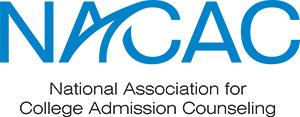Ah, fall. That wonderful time of year when school begins (in some parts of the world), sweaters start to come out of hibernation, and everything seems to have “pumpkin spice” flavoring. It’s also the time of year when college application deadlines start to appear on calendars.
As one of the largest systems of higher education in the world, the University of California is an application destination for many (the UC system got 215,162 unique applications for Fall 2020!). Here are some tips to help put your application towards the top of the pile.
- Keep track of deadlines. The UC application opens on August 1st, but students cannot submit the application until the submission window opens on November 1st. The final date a student can submit a UC application is November 30th.
- Pro tip: No one likes technical glitches, so I recommend students aim to submit their applications between Nov 4th and Nov 26th to avoid the possibility of servers crashing.
- Have your transcripts handy. The UCs require students to report their academic history in lieu of submitting official copies of transcripts. It is critical that you report everything exactly as it appears on your transcript (so no changing that B in math class to an A). If you took any summer classes for academic credit or community college classes, make sure to report those too!
- Pro tip: The academic history section will take a while, so make sure to leave plenty of time to complete it and check it a few times. It helps to have a friend review it with you and a snack handy!
- Let’s talk about A-G courses and GPA qualifying. The UCs have academic admission requirements for all students regardless of residency. These are called the A-G courses and refer to specific subject areas. Check to make sure you are A-G qualified—otherwise, the application will flag missing subject areas before you start the application submission process. The UCs also have specific GPA requirements for residents and nonresidents, so be sure to calculate whether you qualify with your A-G courses.
- Pro tip: California residents can see what classes count for A-G subject areas through this searchable database. Out of state and international students should reach out to the UC campuses they are applying to for clarity regarding courses if they have specific questions.
- Campus and major choice matters. Students apply to all UC campuses through the one UC application, but make sure to pick the campuses you’d actually want to go to (it’s $70 per campus (US) and $80 per campus (international and non-immigrant) for 2020-2021 applications! Students who qualify for fee waivers will receive 4). Different campuses offer different majors, so look over what’s offered at each school before making your choices.
- Pro tip: Certain programs, typically those in the arts, require a supplemental application. If you are applying to a program that requires a supplemental application, make sure to list that major first because it will trigger an email from the UC campus for that major with instructions on how to upload those supplemental application components.
- What is this UCSD college choice thing? Each UC campus is pretty special, but UC San Diego works to make the campus feel more intimate by placing students in one of seven colleges. Students have to rank their choices on their UC application if they elect to apply to UCSD. Each college at UCSD differs in terms of campus location and housing, and each college also has different general education requirements (the classes each student has to take before graduation regardless of major). Definitely look over the different colleges before you apply because it’s very difficult to change once placed in a college at UCSD.
- Pro tip: This is a great one page overview of the different colleges and the academic requirements associated with each! Be sure to bookmark for reference when you fill out that section of the UC application.
- And how about EOP? The Educational Opportunity Program (EOP) is offered to California residents and Native American scholars from any state. It is designed to assist students from first generation and/or disadvantaged backgrounds with support like mentorship, financial help, and advising/counseling when they are at a UC campus. To be considered, you will need to indicate your interest on the UC application and make sure to fill out the sections about your family size, parents’ level of education, and household income. There is also a brief statement you will need to submit to talk about why you are interested in EOP.
- Pro tip: Not sure if you qualify for EOP? Reach out to your school counselor for more guidance.
- So much room for activities! The UC application allows students to list up to 20 different activities on the application. These are broken up into different categories (award or honor, educational preparation program, extracurricular activity, other course work, volunteering/community service, and work experience) and each has a different character count limit.
- Pro tip: Before filling out this section, sit down and make a list of all the activities you’ve been involved in. Remember: informal activities and family responsibilities count, too! Anything you spend time doing outside of class is fair game for the application.
- The UC Personal Insight Questions aren’t like other college essays. On the UC application, students will pick 4 out of 8 prompts and respond in 350 words. The big thing to remember is that these are designed to be answered like interview responses. It’s important that you answer the prompt clearly with examples to support your responses. Each question is weighed equally, so choose the ones that will help the reader get to know different aspects of you and your story.
- Pro tip: The UCs have a great worksheet (English, Spanish) to help you brainstorm. Make sure to leave time to read through your responses and have someone you trust read them over before you submit.
- Anything to add? The UC application has 2 places for applicants to provide additional information. The first opportunity is after the Academic History section and the other is after the Personal Insight Question section. These sections are meant for you to add any other information that the reader needs to review your application holistically. Examples would be explaining curricular choices, special programs you participated in, or aspects of your high school that are unique. Do not use these sections to answer another Personal Insight Question.
- Pro tip: If you or your family were substantially affected by COVID, consider including that information in these additional information sections. Examples include changes to your high school’s grading policies, drastic changes to family/home life, etc.
- What other documents do I send? The UCs are pretty clear about what they want applicants to send: just the application and test scores (if you are submitting those). If you are applying to a program that requires a supplemental application, be on the lookout for the email from the specific UC campus with instructions on how to submit that. Unless a UC campus asks for it, don’t send any transcripts or letters of rec. And make sure you’re regularly checking your email so you don’t miss any requests!
- Pro tip: There is one exception to the letters of rec bit: UC Berkeley contacts selected applicants in January and offers them the chance to submit two letters of rec. If you are contacted, make sure to follow the instructions in the invitation email.
Want more help? Our friends at UC Santa Barbara have graciously put together a series of YouTube videos walking applicants through all of the different UC application sections.
About Us: With more than twenty years of experience, Collegewise counselors and tutors are at the forefront of the ever-evolving admissions landscape. Our work has always centered on you: the student. And just like we’ve always done, we look for ways for you to be your best self - whether it’s in the classroom, in your applications or in the right-fit college environment. Our range of tools include counseling, test prep, academic tutoring, and essay management, all with the support of our proprietary platform, leading to a 4x higher than average admissions rates.



.png?width=600&height=200&name=Blog%20CTAs%20(7).png)



